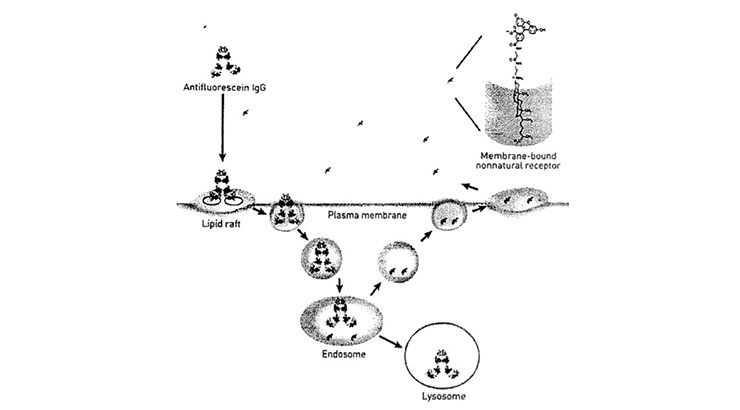Synthetic Mimics of Small Mammalian Cell Surface Receptors
ID# 2004-2971
Technology Summary
The disclosed invention is a method to produce and use synthetic receptors that mimic natural receptors on the surface of mammalian cells. The invention consists of a receptor having the following three regions: a headgroup comprising a protein-binding or drug-binding motif linked to a linker region coupled to a membrane binding element that anchors the receptor to the plasma membrane. When the receptors of the invention are added to living cells, these receptors insert in the cellular plasma membrane, project the protein-binding or drug-binding headgroups from the cell surface, bind the proteins or drugs and internalize them through endocytosis. The proteins may include antibodies, protein ligands and peptides.
Application & Market Utility
Has been shown to deliver the poorly permeable drug, vancomycin, into the cytoplasm of cells infected with Listeria monocytogenes. In healthy (non-infected) cells, the synthetic receptor bound the vancomycin derivative, underwent endocytosis, released the vancomycin derivative in the endosome/lysosome where it was degraded, allowing the synthetic receptor to recycle to the cell surface to recommence the delivery process. However, in infected cells, the receptor released the vancomycin into the cytoplasm where it eradicated intracellular L. monocytogenes.
Next Steps
Seeking licensing opportunities for U.S. Patent No. 7,947,647 and U.S. Patent No. 7,956,028.

